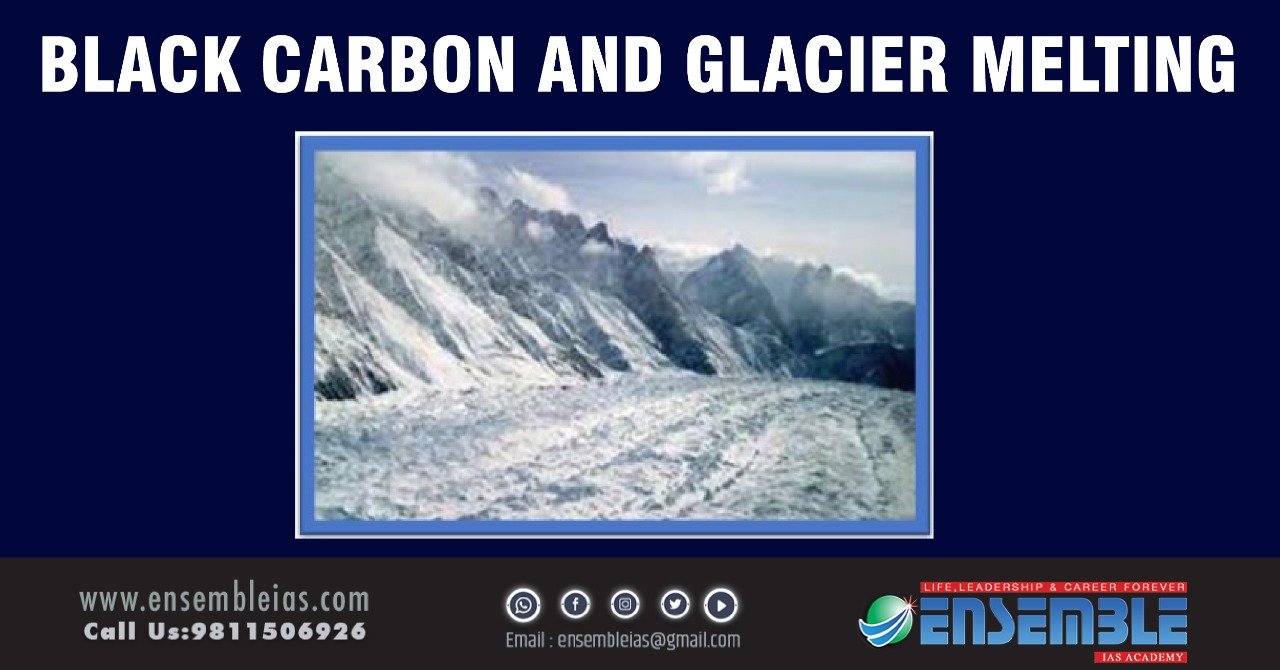Black Carbon And Glacier Melting
Why in news?
- The report titled “Glaciers of the Himalayas: Climate Change, Black Carbon and Regional Resilience” says that the glaciers are melting faster than the global average ice mass. However, the strong policy on black carbon can sharply cut glacier melt.
- The research report is released by the World Bank and covers the Himalaya, Karakoram, and Hindu Kush (HKHK) mountain ranges.
To buy our online courses: Click Here
Black Carbon
- Black carbon is a kind of an aerosol.
- An aerosol is a suspension of fine solid particles or liquid droplets in the air caused by air pollution.
- Among aerosols (such as brown carbon, sulphates), Black Carbon (BC) has been recognized as the second most important anthropogenic agent for climate change and the primary marker to understand the adverse effects caused by air pollution.
- It gets emitted from gas and diesel engines, coal-fired power plants, and other sources that burn fossil fuel. It comprises a significant portion of particulate matter or PM, which is an air pollutant.
Also Read: Myths and Realities about the Central Vista Project
HKHK Mountain Region
- HKHK Region spans eight countries; Afghanistan, Pakistan, India, Nepal, China, Bhutan, Bangladesh and Myanmar and also has some of the world’s tallest mountains including Mt. Everest and K2.
- HKHK Glaciers feed into river systems including Ganga,Yangtze, Irrawaddy, and Mekong.
